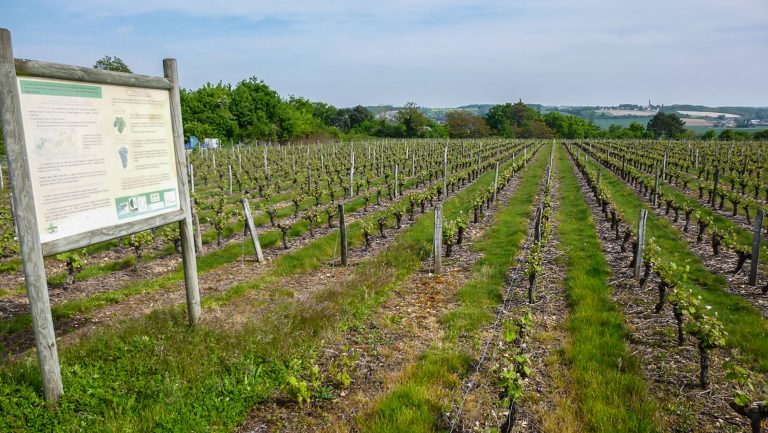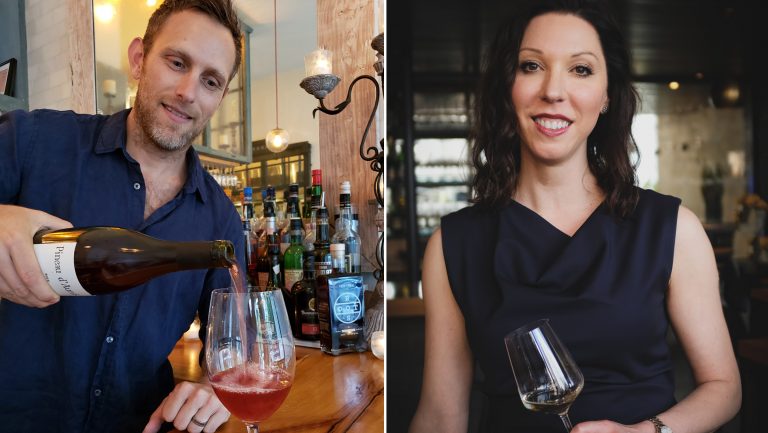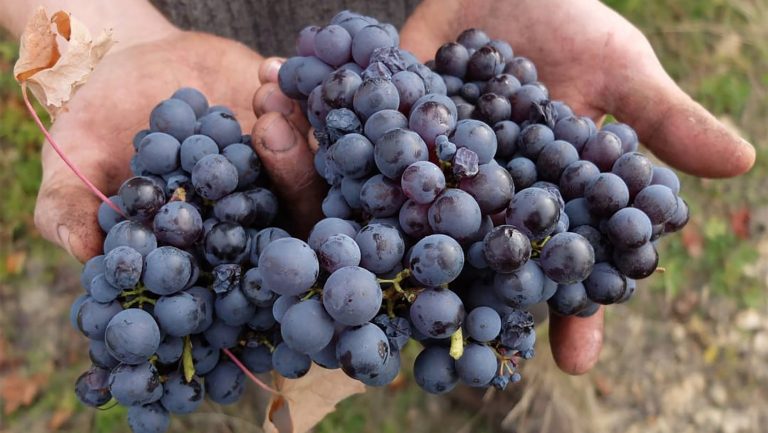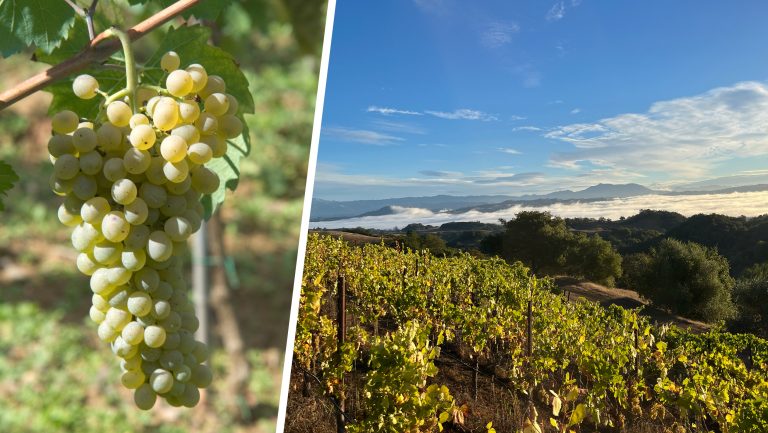It was love at first pour when Nita Bardolia, a wine expert and sales associate at 56 Degree Wine, a shop in Bernardsville, New Jersey, tried Pineau d’Aunis. Bardolia has always been a huge fan of Loire Valley wines, and her initial sample of this pale red confirmed her affection for the region’s native grapes. “I find the wine to be so versatile,” Bardolia says. “I like reds that are on the lighter side, with more earth- and terroir-driven flavors. Pineau d’Aunis isn’t bursting with super juiciness, but it does have brightness to it.” Bardolia also recommends the wine for being food friendly. “It’s a good backdrop for so many things. It’s very much my go-to red now.”
Bardolia isn’t alone in her devotion to Pineau d’Aunis. The versatile grape, which is also known as Chenin Noir—purportedly a favorite of King Henry III of England—has recently garnered attention from sommeliers and consumers in the United States. Though it’s rare to find it outside the wine hubs of New York and California, it can show up in some surprising locations. Marcus Egge, the wine director at 900 Wall in Bend, Oregon, has offered a strawberry-rhubarb-colored sparkling version from Domaine Patrice Colin in the Central Loire Valley on his list for years. “To me, it has a savory quality to it,” he says. “It has a little sage and can stand up to dishes like red meat or carpaccio.”

Don’t miss the latest drinks industry news and insights. Sign up for our award-winning newsletters and get insider intel, resources, and trends delivered to your inbox every week.
“Pineau d’Aunis is a regional red grape that can be found mostly around Anjou and Touraine in the Loire Valley of France,” says Arthur Hon, an advanced sommelier and the U.S. spokesperson for Loire Valley Wines. When varietally bottled, it can be used for still red, still rosé, or sparkling rosé, though it’s more commonly blended and used for regional rosé production.

Although Pineau d’Aunis has its fans, the grape has had a rocky recent history. According to the Eaton, England-based wine writer Richard Kelley, MW, plantings of the grape had dwindled to 16 hectares in the Coteaux du Loir by 1973. People were keen to replace what was considered to be an oddball variety with easier-to-market, easier-to-grow noble grapes. Local growers, however, concerned that the grape might disappear altogether, continued to nurture select plantings and use them in their wine. Over time, regional interest has rebounded, especially among younger people who have seen value in preserving the area’s native grapes. By 2005, plantings of Pineau d’Aunis had increased to 71 hectares.
A primary reason for the grape’s decline is that the vines are notoriously finicky. The clusters are compact and ripen unevenly. “The growing patterns of Pineau d’Aunis—similar to other grapes grown in the region, such as Chenin Blanc—change depending on the soil it is planted in,” says Hon. “In high-limestone-content soil, the grape can mature too quickly, thus depriving it of proper phenolic development. On the other hand, with high-clay-content soil, the coolness and higher water retention of the soil can strongly retard the ripening.”

“In my experience, the vintages we tend to get exhibit huge variation from year to year,” says David Stockwell, the owner of Faun in Brooklyn, New York. Stockwell carries the winemaker Brendan Tracey’s Pineau d’Aunis on his wine list. “The producers are always dealing with this [grape] that’s moody from vintage to vintage,” he says. “When you’re dealing with a grape that’s so temperamental, [buyers, importers, and distributors] need to have a more intimate relationship with [growers and winemakers about] the vintage conditions. There’s a bigger, necessary dialogue [that has to take place] to find the vintage you’re looking for. That’s a pain for larger players, but that’s the kind of thing we at Faun embrace. You have to be willing to dance with [the wine] in its particular way.”
As more French farmers preserve their vines or plant new ones, more buyers are finding it worth their while to do that tricky dance with Pineau d’Aunis. They’re rewarded by a wine that’s full of nuance and interest.
Varietal Pineau d’Aunis wine bears some similarity to Cabernet Franc. “It has lowish tannins, bright acidity, red berry fruits, and lots of pepper,” says Vanessa Conlin, the head of wine for the online direct-to-consumer platform Wine Access, which is based in San Francisco, “but I find it lighter in color and in body than many Cabernet Francs. While there is plenty of red berry fruit to the wine, it also has an array of savory notes—the pepper, but also dried herbs, forest floor, and a touch of smoked game.”

Bardolia describes Pineau d’Aunis as being texturally “similar to Beaujolais or Poulsard.” At 56 Degree, she often recommends it to people who are looking for wine with similar body. She also points it out to consumers who are looking for a lighter-style red or an unoaked red. “If someone wants a red that’s worth chilling,” she says, “or a red they can start a meal with—for the people who don’t want white, this is perfect.” She often recommends the Pineau d’Aunis Le Rouge-Gorge from winemaker Eric Nicolas at Domaine de Bellivière, or Vignoble Dinocheau, both from the Touraine region.
“I’d sell this as a discovery wine to try in the summer months,” says Conlin. Given that it can be served cool or chilled, “it’s a great option for outdoor gatherings such as picnics, barbecues, and concerts,” she says. “The freshness of the acidity makes it really versatile with food.”
Both Egge and Stockwell find that Pineau d’Aunis does well with customers who are interested in the stories of local producers, particularly those who are working to save the grape from obscurity. “The farmers who we’re working with are some of the oldest in the region,” Egge says. “They’ve been [farming] organic and biodynamic since the beginning, before it was cool.”
Egge encounters two barriers to selling the wine, though. One is that customers are worried about stumbling over the pronunciation; the other is that they’re worried about trying something they’ve never heard of. “My sell is, it’s lively, it’s sexy, it’s a different style,” says Egge. “It’s not angular or sharp, and it’s got this roundness to it. It’s dry—but not ‘hurt the fillings in your teeth’ dry. It plays well on the playground with food.”

Stockwell often recommends the wine to customers on Wednesdays, when Faun offers the chance to buy 375-milliliter carafes. That way, people can try a few different wines without making a big investment. (The deal also allows the restaurant to draw in consumers on Thursday: If any half bottles are left over, the wines are offered by the glass until they’re gone. That means guests can often try a glass of something that on other days they could only order by the bottle.)
Stockwell also recommends that bars and restaurants open a few bottles and let staff try it. If their eyes light up when they talk about the wine, he says, guests are more likely to get enthusiastic about it, too. Turning his front-of-the-house workers into Pineau d’Aunis converts hasn’t been difficult. “When you taste the wine,” he says, “you wonder, ‘Why would [this grape] ever have been lost?’”

Dispatch
Sign up for our award-winning newsletter
Don’t miss the latest drinks industry news and insights—delivered to your inbox every week.
Sophia McDonald is a freelance writer who lives in Eugene, Oregon. Her work has appeared in numerous publications and on websites, including Wine Enthusiast, Eating Well, Sip Northwest, and 1859 Oregon’s Magazine.








